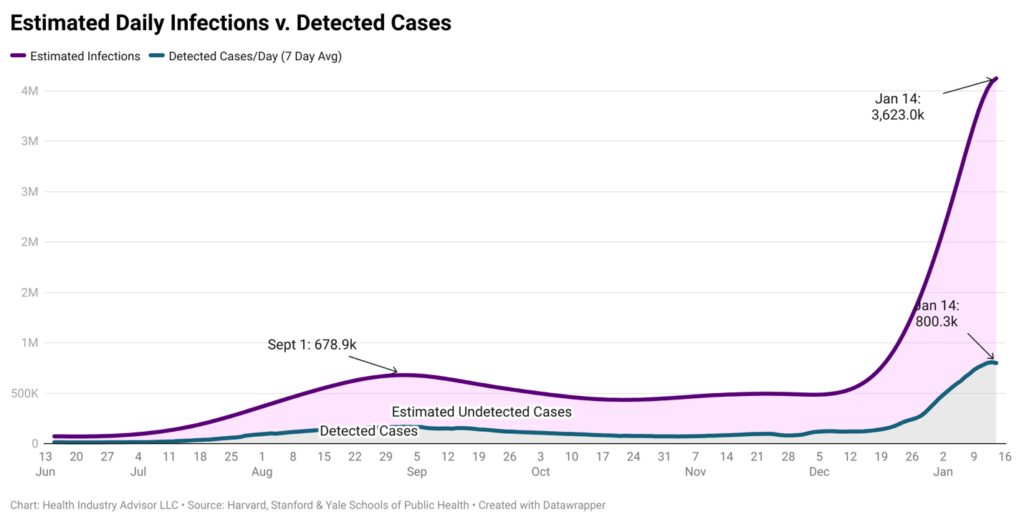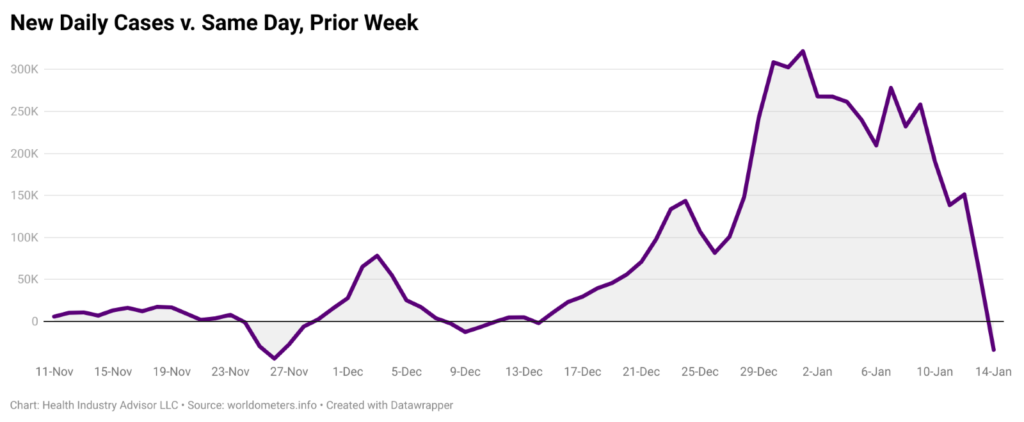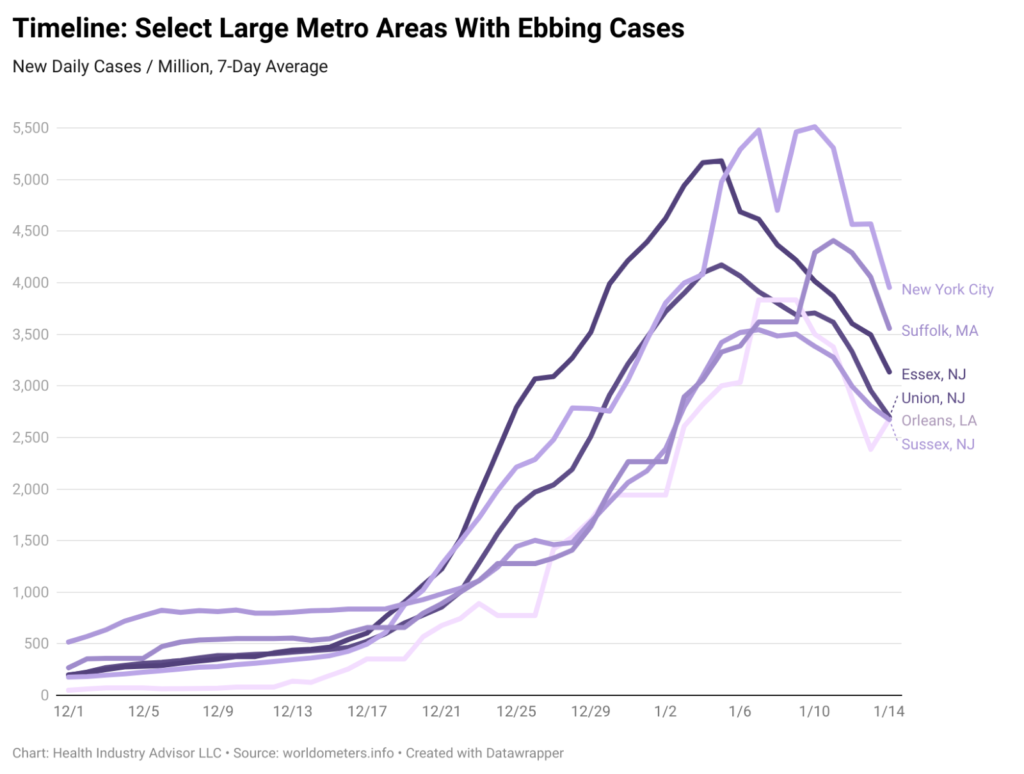January 18, 2022 – Covid-19 cases swelled to a new record last week in the United States. Nevertheless, the Omicron infection wave is cresting or likely will do so soon. Hospital stays and deaths with Covid lag new infections, suggesting that these outcomes will continue climbing. Peak hospitalizations and deaths could occur in late January or early February.
Last Sunday, the 7-day average reported cases set a pandemic-high with nearly three-quarters of a million cases per day. This new case rate climbed each day through Thursday, stretching to 807,000 before easing slightly on Friday. The previous high occurred way back on January 3, 2021.

However, these reported cases understate the full scope of the infection spread. By one estimate (https://covidestim.org), Covid19 infected 3.6 million U.S. residents on Friday alone – the equivalent of 1.1% of the population infected in a single day. According to this estimate, Covid19 has infected one in six people in the U.S. since Christmas.
So, what evidence supports the idea that the infection wave is cresting?
First, the test-positive rate stabilized during the past week. This rate quintupled in November and December before leveling recently. Throughout the pandemic, a rising test positivity rate correlated with surging cases. A declining rate corresponded with ebbing cases.
Second, week-over-week case growth eased since reaching its apex early this month. As of January 4, cases had doubled week-over-week. By Friday, this growth rate fell to single digits.

With each infection surge during this pandemic, any prolonged downward trend in the case growth rate signaled that the wave would soon crest. We observed ten straight days of negative growth as of Friday.
Third, several large metropolitan areas witnessed declining new daily cases last week, following earlier, rapid spikes. The Omicron surge struck the District of Columbia, Essex County (N.J.), New York City, New Orleans, and Union County (N.J.) earlier and harder than many other places in the U.S. However, cases in each of these areas fell throughout the past week. Similarly, hard-hit Florida, New Jersey, New York, and Rhode Island witnessed a slowdown in new cases last week.

Trends in these states and metro areas mirror the pattern established in India and the United Kingdom, where Omicron struck before arriving in the U.S.
Lastly, leading Covid19 modelers firmed their expectations for receding infections in the U.S. The Institute for Health Metrics and Evaluation (IHME) maintains perhaps the most widely cited Covid model in the public domain. In its earlier (December 18) model, IHME predicted a January 27 crest for daily Covid19 infections in the U.S. However, in its January 14 update, IHME accelerated its timing, speculating that daily infections here peaked on January 2. IHME predicts a screeching falloff in cases – by this Saturday, projected new daily infections plunge to half the January 2 peak. IHME anticipates these infections will drop by half again by the end of January.
IHME predicted that Covid hospital admissions would peak yesterday (Sunday). The model forecasts that the Covid census peaks next Monday, about 10% higher than today.
The “ensemble” forecast reflects the composite thinking of several dozen academic and research organizations. The latest ensemble forecast shows new cases peaking sometime in the next two weeks.
Deaths rise under this forecast for at least another three weeks.
The nation’s flu situation offers another ray of hope. Flu visits fell during the week ending January 8, after rising for several weeks. The country remains amid its annual flu season, and visits could rebound. Nevertheless, this current flu visit rate falls below levels typically seen at the point in the season.
By Mark Van Sumeren
